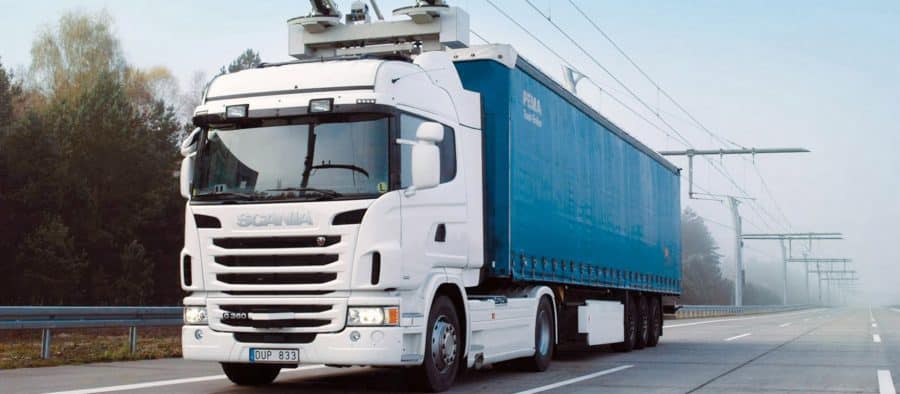
Relying on electrical power when possible and regular engines at other times, here’s how the electric-truck service on a public road will operate.
On the E16 motorway outside the central-Swedish city of Gävle, final preparations are now underway for a two-kilometre test strip of electrified road for heavy-truck transport operations. Here, electrically powered trucks from Scania will operate along the route, providing goods-transport services under real traffic conditions.
Each truck in the project will receive electrical power via a pantograph power collector mounted on the frame behind its cab. The pantographs will in turn be connected to overhead power lines located over the right lane of the test road. For added flexibility, the trucks will also be equipped with electric hybrid powertrains developed by Scania.
Conductive electrical transmission
The beauty of the system is that it permits the trucks to operate as electric vehicles when on the electrified road and as regular hybrid vehicles at other times. Unlike old-fashioned city trolleybuses, each truck can connect to and disconnect from the overhead wires while in motion.
Outside the electrically powered lane, the pantograph is disconnected and the truck is powered by the combustion engine or by the battery-charged electric motor. The same applies when the driver wants to overtake another vehicle while on the electrical road.
“When overtaking, the pantograph is disconnected and you drive the truck as a regular hybrid,” says Christer Thorén from Scania’s Hybrid Systems Development unit. “You overtake the vehicle, go back into your lane, automatically reconnect to the pantograph, and resume using electrical energy.”
The technology, known as conductive electrical transmission, has been developed by Siemens, who, in association with Scania, have been conducting trials of electric trucks at their research facility outside Berlin since 2013.
Emission reduction
Trucks powered by electricity are capable of reducing fossil fuel emissions by 80 to 90 percent and energy consumption by 50 percent or more.
“If everything goes as planned, we will soon see more electrified lanes, mainly on highways where there is a lot of traffic,” says Thorén. “In Germany, interest is very high in implementing this technology on the autobahn. And the vision is that electrified lanes will contribute to reducing much of today’s emissions.”
This innovation, coming back home might take a bit longer to get here considering the challenges Eskom has had in supplying the country.
WATCH VIDEO







